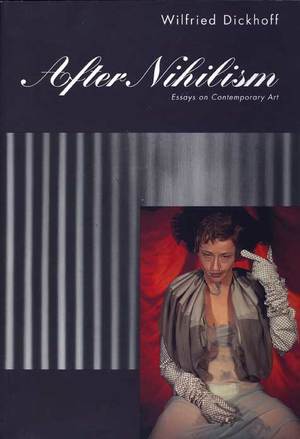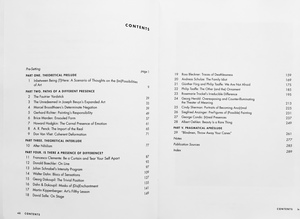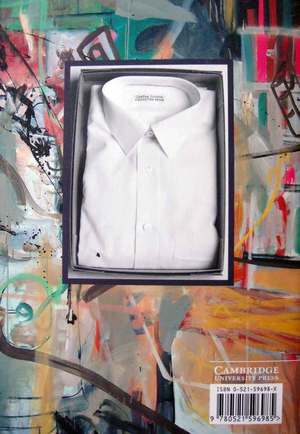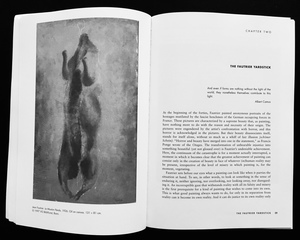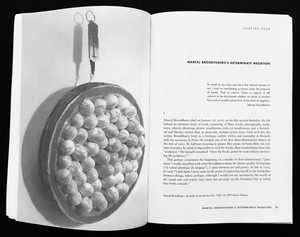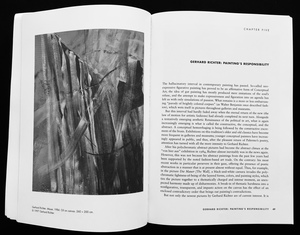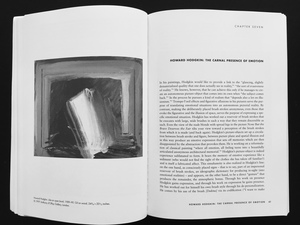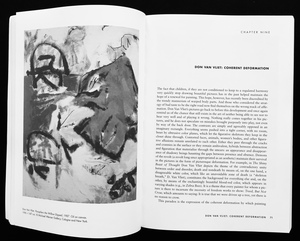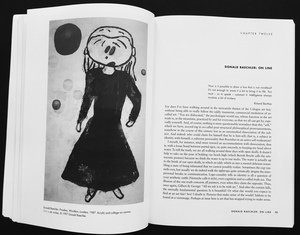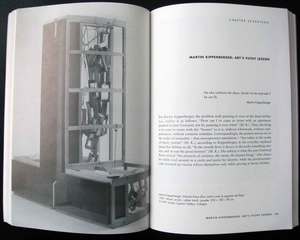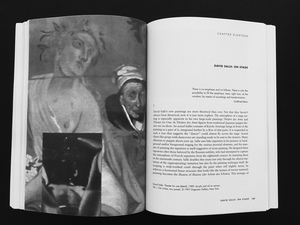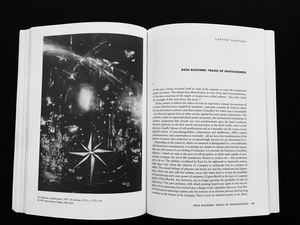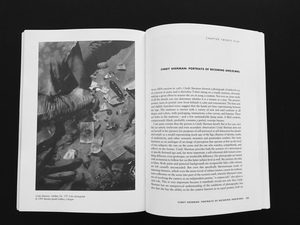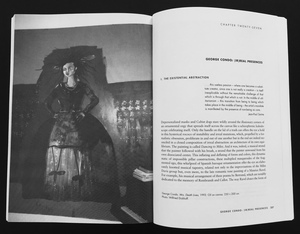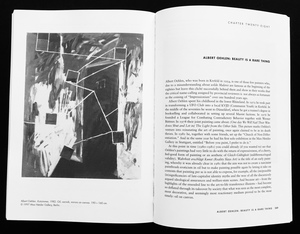After Nihilism
Essays on Contemporary Art (1983-2000)
294 Pages
Cambridge University Press, 2000
In After Nihilism, Wilfried Dickhoff examines the art work of contemporary European and American artists, including Joseph Beuys, Marcel Broodthaers, Gerhard Richter, Cindy Sherman, and Philip Taaffe. Questioning Adorno's concept of negative freedom in the autonomous work of art, he demonstrates how the works of these artists, in which the contradictions and paradoxes of deconstruction/reconstruction, beauty/sublime, difference/indifference, affirmation/negation, authenticity/cynicism, subject/nonidentity are never resolved, thus creating images of competing complexities.
Tracing the development of the (post)avant-garde through the 1980s to the present, this collection provides in-depth analysis of particular works of art and demonstrates the author's close engagement with and understanding of the contemporary art world.
Pre-Setting
"There is no understanding, there are only various levels of humor."
Gilles Deleuze
"Today it goes without saying that nothing concerning art goes without saying, much less without thinking. Everything about art has become problematic: its inner life, its relation to society, even its right to exist."1 Adorno’s Aesthetic Theory, written in the 1960s, began with this sentence - and it still holds true today. Furthermore, in the realm of art criticism, in the realm of the discourses on art - be they philosophical, art historical, sociological, or psychoanalytical, or be they structured within attempts to integrate different sciences - and in the realm that is insufficiently labeled with the term "public," the talk of the end of art mounts. It is talk of the interchangeability of art’s forms of expression, of its sociocultural arbitrariness, and of an increasingly generalizing indifference that drives the necessity, the autonomy, the irreducibility, the critical potential, and the "objection" tied to art’s subjectivity ad absurdum. There is much to be said for these critical points of view and the economic situation of the 1980s that blessed art with an unprecedented economic "success" and seemed to have confirmed once more the disappearance of art into an advancing culture of mere decorations of power. Correspondingly, in the current discussion of art and in the art of the nineties, we are experiencing a multitude of deconstructive discourses on art and nonart that more frequently take art’s place, putting art in a role as a supplementary illustration of the theoretical development of the end of art.
The essays in this book are based on the self-evidence of the irrefutably questionable nature of contemporary art. But they are not content with theoretically confirming this with artworks as examples. Instead, they question this questionable nature once again. They do this in view of specific works by artists with specific attitudes in specific situations, institutions and contexts. These works do not serve as an illustration and confirmation of previously decided theories. The self-fulfilling prophecies of art theory that are served only by art itself as material for art theory’s self-affirmation do not interest me. On the contrary, these essays are a product of the uncertainty that even the most advanced theories on contemporary art repeatedly experience through art as art, meaning through artistic thought, which is a living concept, and through its nonverbal, analogical language - which is a language of sensations.2 Yet, I am also not interested in rashly putting in the last word on the fetishization of art as the last bastion of the unspeakable, intangible, absolute and sublime. Before one is taken in by these and all other formations of art myths, perhaps one should first strip off everything that is expected of art as spiritual masturbation. Today, quite a lot of what is unfulfilled and even unfulfillable within political, social, personal, sexual, erotic, and altogether interpersonal life is "aesthetically" demanded of art. Certainly, art presents itself as a projection surface, and, therefore, the resulting compensatory fetishization - in view of its questionable nature - is also often approvingly accepted by art. But can art really bear this, much less redeem it? How much religious, philosophical, and other types of yearnings for meaning, coherence, satisfaction, and harmony should art represent as a last stand-in?
While the fetishizations, ascriptions, and formations of art myths mount, now and then art still takes other paths that question its questionable nature. On these other paths art often starts out from its own impossibility. Accepting this, and not playing it down, art repeatedly opens unexpected possibility where impossibility was long thought to have become the norm. Roland Barthes once said that to make art means to consider the desire for the impossible reasonable. That is a fitting formulation because it has always understood art, not only from the perspective of seemingly impossible desires but also and precisely from the perspective of the impossibility of redeeming art’s own standards and essentiality, from the perspective of the impossibility of art as art. In view of specific artworks, I am often reminded of Adorno’s remark that art is "the possible, as promised by its impossibility."3 Could it not be that the memory of unredeemed difference - which single works of contemporary art here and there evoke - draws attention to the unsatisfied nature of this paradox? And could it not be that art which opens possibility by starting out from its own impossibility is very close to the counterpole of the so-called irrational in the tradition of the ideas of reason as Kant understood it?
These are some of the questions contemporary art raises in these essays, which the essays do not answer but conceptually pursue. I consciously say "some" of the questions because even with negative dialectic the impossibility of art is no longer so easily overcome. The essays accordingly strive for an openness toward the formation of concept, which incorporates features of what Barnett Newman once called "impassioned criticism."4 This openness toward the formation of concept might be appropriate in the moments of unredeemed difference in contemporary art. And correspondingly, these essays also reflect the process of the reciprocal uncertainty between art and art theory. They expose themselves to this double uncertainty and even start from there. These essays make an attempt, which is certainly not new but is as yet unfulfilled, to establish a dialogue with what makes itself visible as art, with what Plato called "ecphainestaton," what appears outward from within. What this dialogue might look like, linguistically, depends greatly upon the language that one could find for it. The attempt to bring the language of art up for discussion is naturally tied to the demand - again, neither new nor unredeemed - to work with terms against terms. Essays on art that expose themselves to this are put to a linguistic endurance test. Its result, even its possibility, remains open. While writing these essays, I was always preoccupied with the question of whether or not this endurance test of attempting to still use language without undoing the achievements of deconstruction is adequately described in reference to art. In the best case - and this case came up more often than I had dared to hope - these essays will have been polylogues that turn out to be female.5
But what is the subject, if there can even be one? The title of this book indicates a tendential direction. It is a paradoxical line of flight because "after Nihilism" may be a desirable impossibility, but it still is an impossibility. Nihilism is not an attitude that we can change at will. Here, good will accomplishes nothing. Nihilism is not an attitude - nihilism is still the contemporary human condition. And let us not forget that the director of its realities and virtualities and even of the imaginary scenarios of nihilism’s (im)possible overcoming is still das Kapital. This condition is still about seeing, coping, and surviving through6 - before we delude ourselves that it has been overcome when, in fact, we have confirmed it by protesting against it. The title of this book still emphasizes a seemingly paradoxical insistence on a Nevertheless (Dennoch), on the impulse of non-affirmative affirmation that is visible and perceptible in contemporary art. This impulse is not in opposition to a critical or anti-illusionistic motivation. Rather, it is based upon such a motivation. It can arise only there where an artist has sensed and thought of the degradation of art myths. Placing this tendential direction at the forefront of the reader’s expectation was intentional because the essays are dedicated to the attempt to set free this moment - a moment that might correspond to the moment of beauty. Art that is suitable to this non-nihilistic impulse - and art is rare - is always more than a mere expression of a gesture of the degrading of the lies and illusions they no longer can or want to be. As blocs of sensations that stand up on their own, art works - the self-consciousness of their impossibility is also conveyed (even if it could be understood as the degradation of art myths sublimated to form) - have always shared a nonetheless melancholy hope that I would like to call the degrading of the degrading. The essays in this book are in solidarity with this hope.
Art as beauty without beautification, as negativity without negativity, is it conceivable, can it become visible? This idea touches upon the question of beauty, the question of mourning for a beauty that bears the legacy of the sublime within it. The montages of such an art would also always be demontages, for instance, of all illusions of purity, absoluteness, and sublimity. But the deconstructions of such art would also always be constructions. Art would turn the execution of its deconstruction toward what is constructive in a non-affirmative affirmation. The art in question here is de-montage and de-construction, namely, concurrently related to what art, in each case, is about and with reference to itself as art. Art today is a degrading in which its anti-illusionistic motivation prospers and, at the same time, a degrading of the degrading. That is art’s Nevertheless as an (im)possible figuration of possible freedom. Art is negation (death lives a human life, according to Hegel) and, at the same time, affirmation. A yes devoid of conviction. Could it not be that an art which nevertheless arises from a will for beauty as truth enters into the legacy of the sublime in that it does not play down its own and art’s contradictions but instead presents beauty as a paradox? Were I to assert that this is the subject of this book, I would already be off the subject because this question unfolds into a multitude of thematic relationships that are grouped around a thematic core, which is contradictory in itself. But does the legacy of the sublime not lie in the unfolding itself? Does it not lie precisely in not playing down, harmonizing, and reconciling the contradictions it left behind but instead in struggling with and bringing them out? And could it not be that the language of art - as the language of unreconciled contradictions - resists the impossibility in everything in the name of what was once called freedom.
The art that will be in question in this book does this with results that were unhoped for. In many cases these results hardly bear any features of the dualisms that seemed to structure what one calls modern art. Beyond all harmonizing decoration and beyond all "either-or," "as well as," "on the one hand-on the other hand," and other evasions of unavoidable paradoxes, many works of contemporary art appear as though they were formed into surprising gaps. Between form and content, autonomy and fait social, subject and object, ratio and irratio, visibility and invisibility, outer and inner, art and nonart, abstraction and figuration, beauty and sublime, riddle and clarification, myth and demystification, as well as other contradictory pairs, these artworks appear as settings for an oscillation and/or a raising to a higher power and/or a going between and through.7 They are intermezzi of an intangible, nonetheless sensuously experienceable hope, a hope that springs forth from the trace of memory of a lost human (without identity), which becomes apparent when faced with such intermezzi. Can the open wounds of unredeemed difference that flare up in moments of the presence of our lost memory still be claimed?
The generation of artists the main portion of this book addresses were imputed, mainly during the 1980s, to have reactivated something like a new subjectivity. Certainly, these artists first searched for the consequences of the failing standards of the sociopolitical will power of art - as it hopefully reappeared in the sixties and seventies - with a focus on what is reflected in the mirror and in the eyes of the other. But that onto which one is thrown back upon is no longer the identity of the subject. The human being as a subject who is aware of its presence, who freely identifies itself with itself, is now truly long dead. That may be simplistic, but we cannot avoid finally drawing the conclusions that go along with it. Rimbaud’s formulation "The self is an Other" already historically marks this decisive point of the lost (bourgeois) self that has since set at least every advanced artistic movement in motion. These movements have set free potentials of nonidentity that were, however, repeatedly undone in the course of establishment, institutionalization, and integration. Nonetheless, the stories of the so-called avant-garde have accumulated unredeemed difference that is claimed again and again in precisely those works by the generation of artists that developed its attitude in the 1970s. This happens with perhaps less illusion than ever before - which may at times seem cynical. But does not the absence of belief set free an openness of another sort that is more honest as well as more responsible than the eternal reproduction of art utopias that, in the end, really serve only the affirmation of illusions of identity and the soothing of the moral conscience? Certainly, in the eighties and nineties we have experienced how an art dedicated to the scattering of the subject has very rarely demanded nonidentity. It normally happened that art quickly disappeared, as though it had been handed over to the art industry on a platter. As a piece of merchandise among merchandise, it enacted - not always against its will - its own interchangeability and arbitrariness. It functioned as the interchangeable material of an indifference that was accelerated to the point of dizziness and seemed to water down every Nevertheless of art.
Nevertheless, there were and are deviations from the tendency toward global indifference. And I believe to have seen them here and there: first, where failure and impossibility are no longer concealed; second, where the de-territorialization of identity and, correspondingly, an opening of the non-identical is allowed; and third, where the shattering of identity (of the subject, the self, the artistic self, the artwork, the artistic concepts, the discursive reinsurance of "art"), where a basic disagreement with oneself is experienced as a non-indifference toward the Other,8 toward what is foreign to me (toward me and others), what is not identical to me and/or itself. Could it be that a Nevertheless of art could prosper today where difference cannot be separated from non-indifference, from non-unconcern toward other existence ("human beings," animals, etc.), precisely where both are articulated at once? And accordingly, could not an art of difference formation be an art of nonindifference? There is much to be said against this. Some works by contemporary artists, however, speak for this. These shall be spoken of here.
The questions I address in this introduction, in an extremely shortened form, revolve around something specific in contemporary art that I would like, as a trial, to call responsibility of form. This "phenomenon" as it is addressed and touched upon in very different manners, especially in European and North American contemporary art of the eighties and nineties, and as it is realized within the specific artistic perspective of each artist, could have been the leitmotif of this selection of essays. With this term, I attempt to address the specific artistic responsibility that precedes every moral or sociopolitical conception of art - that, furthermore, is based on a radical openness which claims difference but also undermines it and exposes the "identity-addicted," security-conscious state of mind of every ideology of art. Because this responsibility is due to the experience of difference as nonindifference, it takes a big risk. It is openness as unprotected vulnerability. An unrestrained, tragic desire, whose necessity is nourished by the demand for freedom, a freedom that is bound solely to the art of difference formation. Said in a very shortened form, I would like to assume that such an amoral responsibility of form comes from a desire, from an intention of desire that turns nothing into an object of its own desire and that is also not aimed at loving something and lovingly becoming "one" with an other. Jacques Lacan brought my attention to this when he spoke of the desire of painting - as distinguished from the subconscious desire he called "the desire of the Other" - as a sort of "desire on the part of the Other (désir à l’Autre)," which respectfully desires the Other as an (unreachable) Other and "at the end of which is the showing (le donner-à-voir)."9
Showing the gaze of the Other as art. What is that? How does that look, how does that appear outwardly through a picture painted in 1997, for instance, at a time when no one who takes a brush in hand can seriously believe in the possibility of painting? The same is true, by the way, for all other media when they are approached from the perspective of possible art. What is art’s perspective today? A perspectivism (Nietzsche) that wants to give ideas of reason (Kant) as showing gazes? With this, in the end, the question of presence is raised again. I find myself asking this question when I stand before a work that seizes the point of view of my perception and conveys a moment (Augen-Blick)10 that can be articulated only in this manner and in no other, a moment when, for instance, an image is truly relevant to me. Neither the fetishism of essentiality nor of inessentiality matters to me. I have survived the Heidegger school as well as the Adorno school. I am also well aware of the danger of fetishizing difference. And in this book one will find enough countermeasures against every form of illusionism, mysticism, metaphysics, and transcendence, through the content as well as through the efforts to find an appropriate language. But there are compositions from nonrepresentative blocs of sensations that do not express difference but develop difference and show real differences. Real differences,11 naturally, do not exist unadulterated. In art, there is no longer anything unadulterated. There are only the impossible paths that go between and through the dualisms. And there is the paradox of a presence of difference that meets the eye as a gaze of non-indifference.
In a word: The art of nonindifference, as presence of difference, is a desirable impossibility that I would like to draw attention to in view of some contemporary works of art. But look for yourself.
Notes
- 1↑ Theodor W. Adorno, Aesthetic Theory (London, Boston, Melbourne, and Henley: Routledge & Kegan Paul, 1984), p. 1.
- 2↑ See Gilles Deleuze and Félix Guattari, What Is Philosophy? (New York: Columbia University Press, 1994), p. 163ff.
- 3↑ Adorno, Aesthetic Theory, p. 196.
- 4↑ Following Baudelaire, Barnett Newman understood "Impassioned Criticism" as a trinity of being partial, passionate and political. See Barnett Newman, Selected Writings and Interviews, John P. O'Neill, ed. (New York, Alfred A. Knopf, 1990), p. 130 ff.
- 5↑ See Jacques Derrida, The Truth in Painting (Chicago and London: University of Chicago Press, 1987), p. 9 ff.
- 6↑ See Martin Heidegger, The Question of Being (Zur Seinsfrage) (Albany, N.Y.: NCUP, Inc., 1958).
- 7↑ See Gilles Deleuze and F&eecute;lix Guattari, A Thousand Plateaus, (Minneapolis and London: University of Minnesota Press, 1987), p. 232 ff.
- 8↑ See Emmanuel L&eecute;vinas, Humanisme de l’autre homme (Montpellier, 1972).
- 9↑ Jacques Lacan, The Four Fundamental Concepts of Psycho-analysis, The Seminars, Vol. XI, Alan Sheridan, trans. (1978), p. 115.
- 10↑ Augen-Blick is a play on the German word Augenblick. Its meaning in English is "moment" or "instant," but the word is literally made up of Augen, eyes, and Blick, look/gaze. Thus, another meaning of the word as what the eyes look at or see (in an instant or at a given moment) comes about.
- 11↑ See George Steiner, Real Presences (London: Faber and Faber, 1989).
